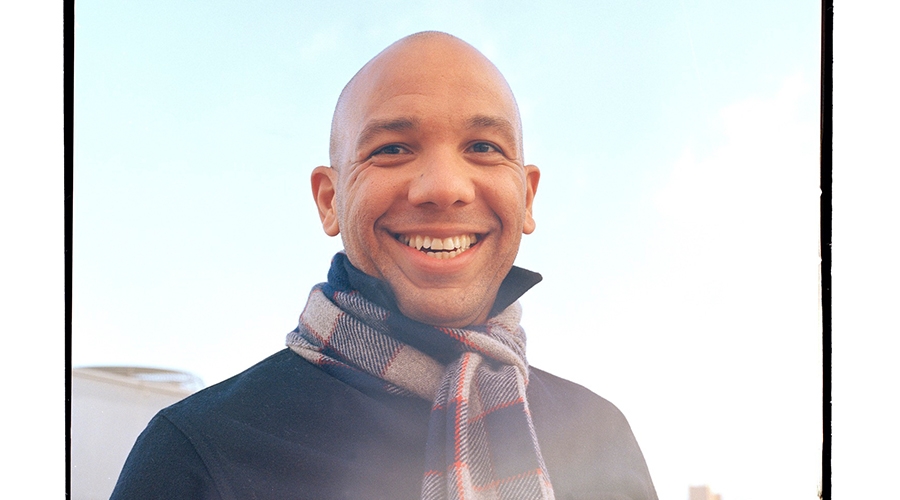
The Master of Fine Arts in Graphic Design program at Otis College of Art and Design is a collective of students, faculty, and international and local designers that over the course of an accelerated, 14-month timespan work through design exploration, critical inquiry, and applied projects. The program is designed to serve the needs of working professionals and traditional students seeking to develop a professional practice in the fields of graphic design and technology. In an effort to highlight the dynamism of the program, we’re doing a series of interviews with several of its working professional graduates, beginning with Ramon Tejada (’12 MFA Graphic Design).
Originally from New York, Tejada sought out Otis’s MFA program in Graphic Design because of its Los Angeles location and esteemed faculty. He currently is an assistant professor of Graphic Design at the Rhode Island School of Design (RISD) after previously teaching in the graduate Communication Design program at Pratt Institute, at the undergraduate level at Parsons/The New School and CUNY-Queens College, and in the MA program at the Minneapolis College of Art and Design (MCAD). He also holds an MFA degree in Performance Arts from Bennington College. Tejada balances his time between Providence, Rhode Island and Palm Springs, California, and also has an independent graphic design practice, primarily working collaboratively to design printed and digital work. He took a moment to answer our questions about how the MFA in Graphic Design benefitted his creative practice.
How would you characterize the graphic design work you currently do?
My practice is a hybrid design/teaching practice focusing on collaboration, inclusion, unearthing, and the responsible expansion of design, a practice I have named “puncturing.” I engage with making printed and digital work using collaborative methodologies and presently focus on uplifting and elevating BIPOC narratives and stories.
Did you apply to other graphic design master’s programs?
I did. I was obsessed with going to Europe for grad school but decided against it. I found Otis and its faculty, and the structure of the program allowed me access to grad school. Finances were a big part of it, and the residency structure made it possible.
“Be open, be ready to let go of expectations, be imaginative and be ready to join a community of learners and makers who engage in joyful ways.”
What type of creative work did you do prior to starting the program?
I was strictly a modernist graphic designer. The program at Otis gave me a foundation for my work as a designer and teacher. The way of thinking, making, questioning, and engaging in critical thought were refined and cultivated in my time at Otis.
How would you characterize the relationships you fostered in this program?
I can’t begin to jot down the deep importance of relationship-building with my classmates, the faculty, and the school. There are not enough words for me to expand on that. In short, it has been one of my life’s most important series of relationships.
How did the program’s faculty support your creative growth?
The support, asking questions, and deep engagement with us as students, designers, and human beings created an incredible web of support that continues to this day. [Program chair] Kali Nikitas, Davey Whitcraft, Yasmin Khan, Juliette Bellocq, [Fine Arts chair] Meg Cranston, and so many of the visiting artists that were part of the incredible creative community made some deep impacts. So many of them are dear friends now.
Do you feel this program helped you build upon your personal/creative/career network in meaningful ways?
Absolutely, yes!
In what ways did this program balance creative work and industry preparation?
As a graduate student, this question may have a different answer because my expectations for being prepared for the industry were completely different from, say, a student coming out from undergrad. Design as an industry has many challenges, particularly regarding representation, ways of seeing and making, etc. So for me, coming out of Otis and knowing that my interest lay in other spaces was important.
Can you describe a breakthrough moment you had while working on a project?
So many breakthroughs, and i’'s really hard to identify a singular one. There were many small and large moments that amounted to so much learning, reframing, and understanding of my work as a designer.
Any advice for current/prospective students considering the MFA Graphic Design program at Otis?
Be open, be ready to let go of expectations, be imaginative and be ready to join a community of learners and makers who engage in joyful ways.
For more information about the MFA in Graphic Design program at Otis College, please visit this link.


